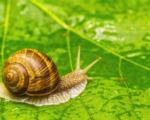A new report from environmental scientists has sounded the alarm over the alarming rate at which the world’s tree species are facing extinction. According to the updated International Union for Conservation of Nature (IUCN) Red List, over one-third of global tree species are now at risk. The findings, presented at the UN COP16 biodiversity summit in Cali, Colombia, highlight the escalating biodiversity crisis and the severe threats to ecosystems worldwide. Deforestation driven by agriculture, commercial logging, and urban expansion are the leading culprits behind this rapid decline. Additionally, pests and diseases, particularly in temperate regions, have exacerbated the situation, pushing vulnerable tree species closer to extinction.
The consequences of this crisis extend beyond the loss of trees themselves. Trees are critical to maintaining biodiversity, providing habitats and sustenance for countless species of birds, mammals, insects, and other organisms. The loss of tree species threatens the delicate balance of ecosystems and has a cascading effect on the survival of other species that depend on them. The rapid decline of trees could lead to further environmental degradation, affecting both wildlife and human communities that rely on forests for resources like clean air and water.
In response to this pressing issue, conservationists are rallying around innovative efforts to preserve endangered tree species. Institutions like the Royal Botanic Gardens, Kew, are spearheading initiatives such as seed banks and arboretum projects aimed at safeguarding genetic diversity and promoting the regeneration of threatened tree species. Emily Beech of Botanic Gardens Conservation International (BGCI) pointed to the growing availability of new tools and technologies that allow for more targeted and effective conservation efforts on the ground. Despite this, conservationists face an uphill battle, as trees in 192 countries are now under threat, including iconic species like magnolias, oaks, and ebonies.
The crisis extends beyond trees, with the updated red list also highlighting the broader impacts on wildlife. Species like the European hedgehog and migratory shorebirds are increasingly vulnerable as their natural habitats shrink due to expanding agricultural land use. In the UK, for example, four species of shorebirds, including the grey plover and dunlin, have been added to the endangered category, further underlining the interconnectedness of ecosystems and the urgent need for comprehensive conservation strategies. The growing threats to tree species and wildlife serve as a stark reminder of the urgent need to address environmental destruction before it’s too late.


















